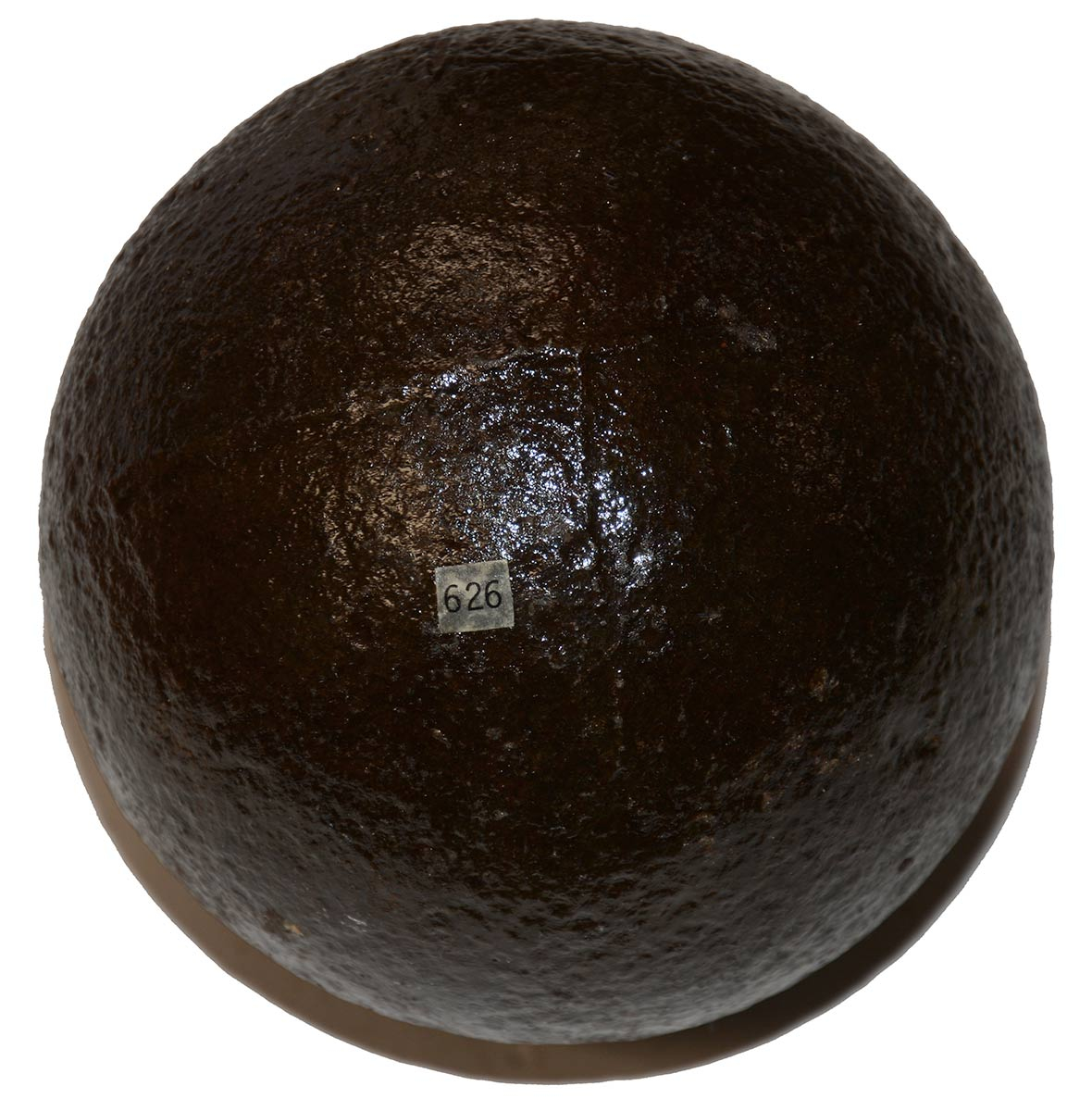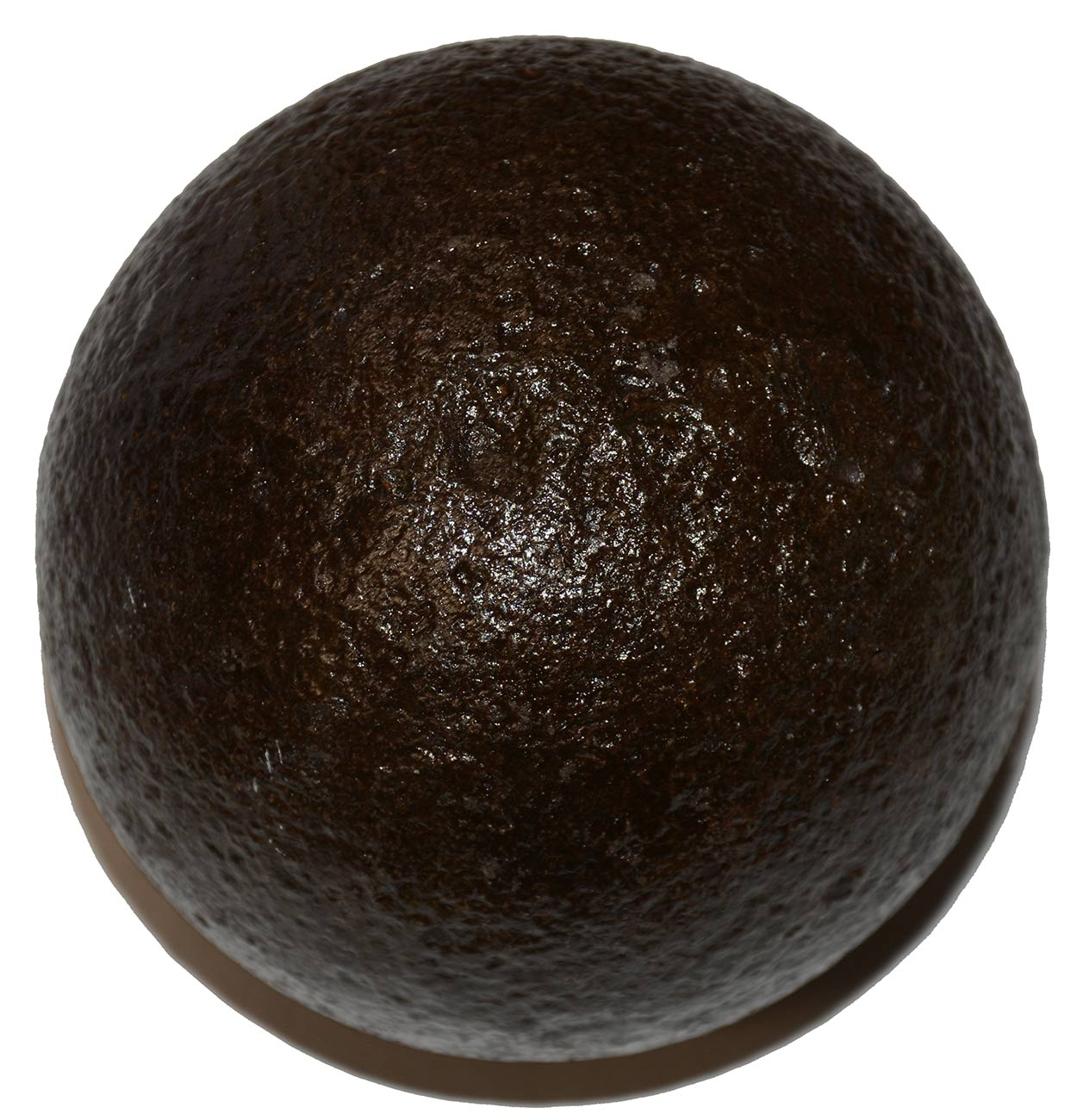site search
online catalog
FRENCH & INDIAN WAR 12-LB SPHERICAL SHOT RECOVERED AT FORT LEBOEUF PENNSYLVANIA

Hover to zoom


$595.00 SOLD
Quantity Available: None
Item Code: 490-4313
Iron 12-lb spherical solid shot with a dark patina with light pitting throughout. Shot also has a pronounced mold seam.
Very small paper label at bottom reads “626.”
Item was recovered on the site of Fort Le Boeuf in western Pennsylvania in November of 1977.
Fort Le Boeuf was a fort established by the French during 1753 on a fork of French Creek in present-day Waterford, in northwest Pennsylvania. The fort was part of a line that included Fort Presque Isle, Fort Machault, and Fort Duquesne.
The fort was located about 15 miles from the shores of Lake Erie, on the banks of Le Boeuf Creek, for which the fort was named. The French portaged supplies and trade goods from Lake Erie overland to Fort Le Boeuf. From there they traveled by raft and canoe down French Creek to the rivers Allegheny, Ohio and Mississippi.
Just before the outbreak of the French and Indian War, Robert Dinwiddie, the governor of Virginia, sent the 21-year-old George Washington, a major in the Virginia militia, to Fort Le Boeuf with seven escorts, in order to deliver a message to the French demanding that they leave the Ohio Country. Washington arrived at Fort Le Boeuf on 11 December 1753. Jacques Legardeur de Saint-Pierre, commandant of the fort received Washington politely, but contemptuously rejected his blustering ultimatum.
During his stay, Washington noted that the fort had one hundred men, numerous officers, and birch canoes and 70 pine canoes, many unfinished. He described the fort as on a south or west fork of French Creek, near the water, and almost surrounded by it. Four houses composed the sides. The bastions were made of piles driven into the ground, standing more than 12 feet high, and sharpened at the top. Port holes for cannon and loop-holes for small-arms were cut into the bastions. Each bastion mounted eight six-pound cannon and one four-pound cannon guarded the gate. Inside the bastions stood a guard-house, chapel, doctor's lodging and the commander's private stores. Outside the fort were several log barracks, some covered with bark, others with boards. In addition, there were stables, a smithy and other buildings.
The fort was abandoned by the French in 1759 and it was burned by Indians in 1763.
On 1 August 1794, Major Ebenezer Denny reported to Governor Thomas Mifflin from Le Boeuf. He described a fortification with four blockhouses, manned by riflemen. The two rear blockhouses had a six-pound cannon on the second floor, as well as swivel guns over the gates.
By 1797 nothing was left. [ad] [ph:L]
~~~~~~~~~~~~~~~~~~~~~~~~~~~~~~~~~~~
THIS ITEM, AS WITH ALL OTHER ITEMS AVAILABLE ON OUR WEB SITE,
MAY BE PURCHASED THROUGH OUR LAYAWAY PROGRAM.
CLICK HERE FOR OUR POLICIES AND TERMS.
THANK YOU!
Inquire About FRENCH & INDIAN WAR 12-LB SPHERICAL SHOT RECOVERED AT FORT LEBOEUF PENNSYLVANIA
Most Popular
Historical Firearms Stolen From The National Civil War Museum In Harrisburg, Pa »
Theft From Gravesite Of Gen. John Reynolds »
Selection Of Unframed Prints By Don Troiani »
Fine Condition Brass Infantry Bugle Insignia »
British Imported, Confederate Used Bayonet »
Scarce New Model 1865 Sharps Still In Percussion Near Factory New »
featured item
MAMALUKE SABER MANUFACTURED IN ENGLAND
Manufactured: England Maker: William Harvey Year: 1840 - 1850 Model: Mameluke Size: 30.25 Condition: VG Wonderful Mamaluke Saber manufactured in England. Most likely for a British officer but possible it was imported to the US market. … (870-74). Learn More »


